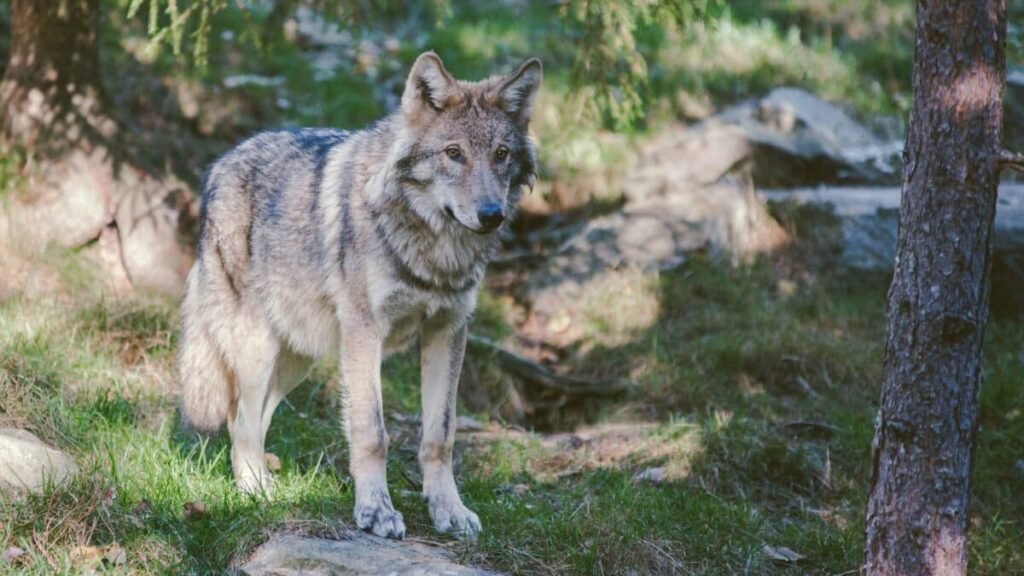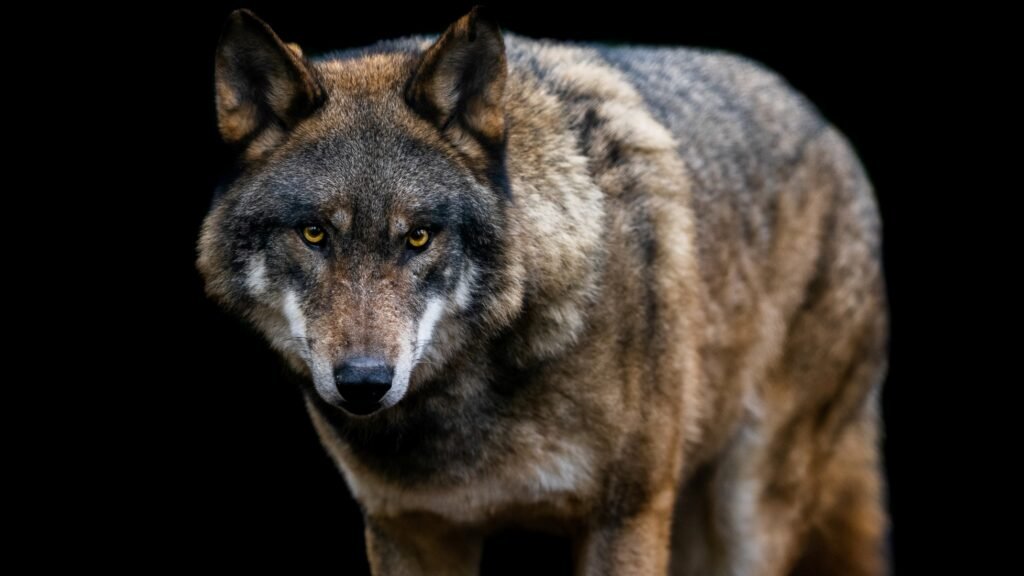The North American Gray Timber Wolf, scientifically known as *Canis lupus*, is the world’s largest canid . It is a fascinating and majestic creature that has captivated the human imagination for centuries. Known for its intelligence, complex social structure, and adaptability, this wolf breed plays an essential role in maintaining the ecological balance in its habitat. Let’s explore some intriguing facts about this notable species, often recognized as the largest wolf in the world.
Gray Wolves Almost Went Extinct in the US

Gray wolves faced near extinction in the United States by the mid-20th century due to hunting, habitat loss, and government-led extermination programs. Their populations dwindled as settlers expanded westward, viewing wolves as threats to livestock and human safety. By the 1960s, gray wolves were eliminated from nearly all 48 states surviving only in isolated parts of Minnesota and Alaska. Their repopulation began in the 1970s when the species was listed under the Endangered Species Act, leading to protection efforts and reintroduction programs, such as the Yellowstone and Idaho projects in the 1990s. These efforts have successfully restored wolf populations in parts of their former range, although they remain a contentious symbol of predator conservation.
Gray Wolf Size and Physical Characteristics

The Gray Wolf is the largest member of the Canidae family and is also referred to as the timber wolf. Adult males typically weigh between 70 to 145 pounds, while females are slightly smaller, ranging from 60 to 100 pounds. They measure about 4.5 to 6.5 feet from nose to tail, with dense fur that varies in color from pure white to grizzled gray and even black, allowing them to blend seamlessly into their
Gray Wolves are Red-Green Color Blind

Gray wolves are red-green colorblind, meaning they see the world primarily in shades of yellow and blue, similar to a human with red-green colorblindness. They have two color receptors in their eyes, blue and yellow, while humans have three. However, wolves can distinguish more shades of gray than humans. While their color perception is limited, their eyesight is highly adapted for their predatory lifestyle. Wolves have excellent night vision thanks to a high concentration of rod cells in their eyes, which are sensitive to low light. Combined with their ability to detect movement from great distances, their vision is a key asset for hunting, especially during dusk and dawn.
Habitat and Range

Gray Wolves are highly adaptable animals found in diverse environments across North America. These habitats include forests, tundras, deserts, and grassy plains. They were once widespread across the continent, but today they predominantly occupy protected areas in Canada and Alaska, as well as reintroduced populations in parts of the United States like the Northern Rockies and the Great Lakes region.
Diet and Hunting Techniques

The Gray Wolf is a carnivorous predator with a diet primarily consisting of large ungulates such as deer, elk, and moose. Wolves are skilled hunters known for their endurance and pack coordination. They often hunt in strategic groups, using tactics that include stalking, chasing, and ambush. Opportunistic feeders, they also consume smaller mammals, birds, and even carrion when necessary.
Social Structure and Pack Dynamics

Gray Wolves are social animals living in structured packs, typically consisting of a breeding pair (the alpha male and female) and their offspring. Pack sizes can range from two to over a dozen members, with each wolf having a specific role and rank within the group. This organization ensures efficient hunting, social bonding, and territorial defense.
Reproduction and Life Cycle

The breeding season for Gray Wolves occurs from January to March. After a gestation period of about 63 days, litters of 4 to 7 pups are typically born in early spring. Pups are raised by the entire pack, weaned at around six weeks, and taught essential survival skills as they grow. Most wolves reach maturity by two or three years of age.
Conservation Status: The Famous Yellowstone Project

Today Gray Wolves are listed as “Least Concern” by the IUCN, but specific populations, particularly in the lower 48 United States, are protected under the Endangered Species Act. The Gray Wolf Yellowstone Project, launched in 1995, successfully reintroduced gray wolves to Yellowstone National Park after their eradication in the 1920s. The return of this apex predator restored ecological balance, reducing overgrazing by elk and allowing vegetation like willows and aspens to recover. This revitalized habitats for species like beavers and birds, showcasing the wolves’ crucial role in maintaining biodiversity. The project remains a landmark in conservation, demonstrating the importance of predators in healthy ecosystems.
Conclusion

The North American Gray Wolf is a remarkable species whose existence continues to impact ecosystems and human cultures alike. While their future is brighter due to ongoing conservation efforts, they still require substantial protection and understanding from humans to ensure their survival. Appreciating these magnificent animals can foster coexistence and bolster efforts to preserve their rightful role in the natural world.

Andrew Alpin from India is the Brand Manager of Doggo digest. Andrew is an experienced content specialist and social media manager with a passion for writing. His forte includes health and wellness, Travel, Animals, and Nature. A nature nomad, Andrew is obsessed with mountains and loves high-altitude trekking. He has been on several Himalayan treks in India including the Everest Base Camp in Nepal.






